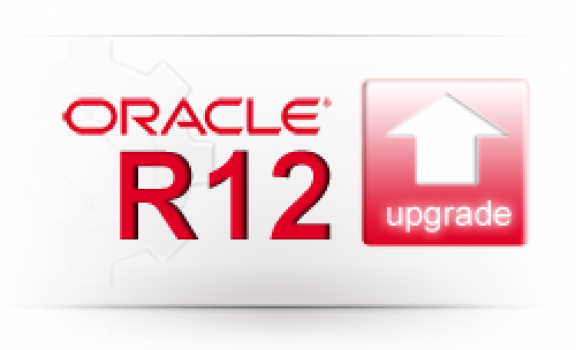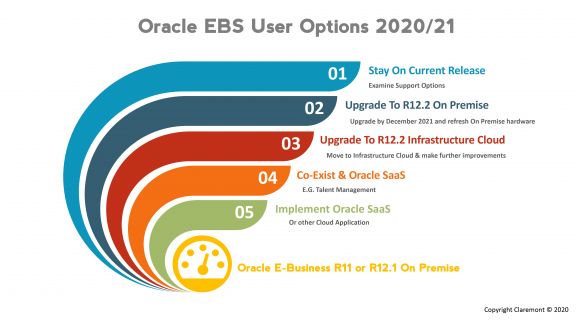Oracle E-Business: Time To Make A Decision On Your Future
Many large enterprises have made a significant investment by deploying Oracle E-Business (“EBS”) software as part of their IT backbone, supporting Finance, Procurement, HR and Supply Chain processes, and much more. Despite all the Cloud hype of recent years, the take up of SaaS for Oracle’s on-premise customers remains very low.
Last autumn, Oracle made a landmark announcement on the EBS roadmap, guaranteeing Premier Support until at least 2030 and continuous innovation for R12.2 of the product.
Currently, around 80% of UK Oracle E-Business customers are on the prior release, R12.1. With rumours of a 12.3 release circulating, many users had delayed any decisions about moving from this until Oracle confirmed that moving to R12.2 would be the last major upgrade of EBS required.
Since the turn of the year, we’ve seen an upsurge in interest from Oracle E-Business customers looking at upgrading to R12.2.
Interestingly, a number of those organisations had started to flirt with the idea that there was going to be no choice, but to move to Oracle Cloud Applications and have since stepped back from this as a result of this announcement.

Before making a decision on your future with Oracle E-Business Suite – are you using it to its full potential? For most firms, the answer is no!

Given the longevity of the product, most organisations implemented EBS 10+ years ago. Talking to Oracle EBS users, many have seen a gap or value deficit emerge between what the system is capable of and what it is delivering:
- Fixed Designs: Companies are under severe pressure to evolve in order to survive and thrive in today’s economy. IT systems that were conceived 10+ years ago may no longer support the organisation’s current strategy. Traditionally fundamental design modifications such as altering a chart of accounts required an expensive re-implementation. However, the tools available today make this possible for a fraction of the cost.
- New Features Not Adopted: Most customers are not on R12.2 and even those that have already made the upgrade typically aren’t leveraging the latest functionality on offer. There is plenty in R12.2 worth looking at, including the growing family of Enterprise Command Centres (currently 19) across EBS which use the Endeca technology to provide real-time “data conversations”, modernisation of the user interface and On-Line Patching.
- Knowledge with Legs: Staff turnover often means key business users have moved on, along with their valuable software and implementation knowledge. Investment in the knowledge of your team is essential to getting the most out of EBS.
Choosing The Right Path
In the last six months, we’ve been asked by many EBS users as to which route is the best one for them going forwards. Most EBS users are on R11 or R12.1, typically using on premise hardware. Each organisation has its own unique considerations, but here are the paths available to organisations:

1. Stay On Current Release
Some users are deciding to stay on their current version of EBS, making cost savings by moving to an alternative product support provider other than Oracle. With this approach, organisations can save circa 50% of their annual product support and maintenance bills. However, firms that take this route won’t be able to reap the benefits of new modules and/or features and functions down the track, without having to pay hefty backdated support fees to Oracle.

2. Upgrade to R12.2 On-Premise
Moving to R12.2 and refreshing the on-premise hardware is proving to be a viable, cost-effective option as it ensures that Oracle users continue to benefit from continuous new features. Some organisations have security concerns that simply aren’t addressed by moving to Cloud infrastructure, and this can be a driver for remaining on-premise.
3. Upgrade to R12.2. Move to Cloud infrastructure and EBS
Making the decision to upgrade to R12.2, whilst taking the opportunity to re-platform onto a Cloud infrastructure at the same time is also proving a popular choice with EBS users. This option allows you to make further improvements and reduce the accrued value deficit:
A key reason for going down this path is that it provides flexibility to organisations by removing the constraints for the design and procurement of fixed hardware for a number of years. It also financially provides the opportunity to move from a Capital Expenditure (CapEx) to Operating Expenditure (OpEx) model.
Some Options For Cloud Infrastructure
- Claremont Cloud
- Oracle Cloud Infrastructure
- Microsoft Azure
- Amazon AWS
Whilst hosting on the Azure or AWS public clouds is generally very popular, the cost of licencing Oracle software on these platforms is at least twice as expensive!
In terms of closing the accrued value deficit, there are plenty of strategies to adopt that will help to better leverage the investment in EBS. Some of these are showcased in the Top 10 Ways to Make Oracle E-Business Great Again. Presenting this to user groups over the last six months, we’ve found that “sweating the assets” and maximising the value EBS users get out of their existing investment in EBS technology is something that is resonating with a large proportion of the user install base.
4. Try Co-Existence
A few customers are choosing to go down the co-existence path by implementing discrete SaaS modules (e.g. Talent Management) alongside their existing EBS footprint.
It allows customers to benefit from leveraging some of the best functionality available in the SaaS product set, dip their toe in the SaaS water and retain their existing investment in EBS at the same time. One should be aware that alongside the configuration of the new Cloud module(s), proper attention needs to be given to the integration aspect. Depending on the combination of modules being used, this is not a simple “plug and play exercise”.
5. Implement an Alternative Product
Finally, some organisations have taken the decision to move to Oracle SaaS (or move to one of the other emerging Tier 2 Cloud Applications software vendors). Organisations moving away from EBS will no doubt do so based on a sound business case, but the following considerations are worth taking into account before making the decision:
Moving from EBS to Oracle Cloud Applications is not an upgrade. Whilst Oracle Consulting uses the Oracle SOAR toolkit to aid the process, it is essentially a fresh implementation.
With a “vanilla” product based on best-practice business processes, the implementation of Oracle SaaS is often much more about business change rather than an IT implementation project. Projects that have started off with the focus being on evolving the business have generally been more successful. Standard business process may not be right for every organisation either, as there are a number of Claremont clients whose customisation forms part of their competitive advantage.
From a functionality point of view, EBS is still generally more functionally-rich than it’s Cloud Applications counterpart, particularly in terms of module coverage, where some areas have not been implemented in the Cloud product yet.
Bringing It Together
To summarise, the key themes that we’re seeing in the marketplace currently are:
- Many organisations are heavily invested in EBS technology, and for a variety of reasons, a wholesale move to Oracle SaaS is not an option any time soon.
- Now that there is clarity in terms of the EBS product roadmap, we’re seeing businesses start to plan their R12.2 upgrades in earnest, as we approach the December 2021 deadline.
- Many firms are also looking at re-platforming EBS on Cloud Infrastructure as the first move that they will make to embrace and leverage Cloud technology.
- We’re also seeing organisations look at other ways to decrease their accrued value deficit, by undertaking initiatives to improve their existing on-premise systems.
Choosing the Right Managed Services Provider
If you are looking for an Oracle Managed Services Provider who can help you with your Oracle E-Business Upgrade, goes about it the right way, and can back up the talk, then contact us.
And if you would like to find out more about our Managed Services or have a question, you can email us at info@claremont.co.uk or phone us on +44 (0) 1483 549004.

